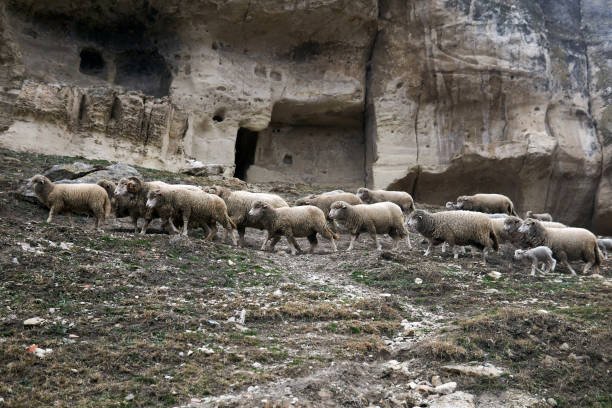What are the desertification impact on animals?
Desertification, the process of land degradation in arid, semi-arid, and dry sub-humid regions, has significant consequences for the natural environment. While it affects various aspects of ecosystems, one of the most vulnerable components is animal life. The encroachment of desert-like conditions disrupts habitats, alters food availability, and increases competition for resources. This article explores the impacts of desertification on animals, highlighting the threats it poses to biodiversity and the delicate balance of ecosystems.
The Impact of Desertification on Animals
The impact of desertification on animals is severe and far-reaching. It leads to the loss and fragmentation of animal habitats, resulting in the displacement and decline of many species. Animals face a scarcity of food, water, and shelter as vegetation cover decreases. The decline in biodiversity disrupts predator-prey relationships and the functioning of ecosystems. Migratory patterns are disrupted, forcing animals to alter routes or face competition for limited resources. Increased competition and overgrazing further degrade the environment. These cumulative effects significantly raise the risk of extinction for many animal species, threatening biodiversity and ecosystem balance. It is crucial to implement sustainable land management practices to mitigate these impacts and preserve animal populations.
- Habitat Loss and Fragmentation: Desertification leads to the loss and fragmentation of animal habitats, resulting in the displacement and decline of many species. As vegetation cover decreases, animals lose access to crucial food sources, water, and shelter. The once diverse and interconnected habitats become isolated patches, reducing gene flow and limiting the ability of animals to adapt and survive.
- Decline in Biodiversity: Desertification often triggers a decline in biodiversity as specialized species that depend on specific plants or microhabitats struggle to survive in the changing environment. Endemic species, which are unique to certain regions, may face extinction due to the loss of their specialized habitats. This loss of biodiversity disrupts the delicate balance of ecosystems, impacting predator-prey relationships and the overall functioning of the ecosystem.
- Disruption of Migratory Patterns: Many animal species rely on seasonal migrations for breeding, foraging, and survival. Desertification disrupts these migratory patterns by altering the availability and distribution of resources along the traditional routes. Animals that rely on specific watering holes or vegetation corridors may find them degraded or completely dried up, forcing them to alter their routes or face increased competition for limited resources.
- Competition and Overgrazing: As desertification progresses, the scarcity of resources intensifies competition among animals. Reduced vegetation cover leads to overgrazing in some areas as animals concentrate in the remaining patches of suitable habitat. Overgrazing exacerbates soil erosion, making it even harder for vegetation to recover. Additionally, invasive species may outcompete native species for limited resources, further threatening the survival of indigenous wildlife.
- Extinction Risks: The cumulative impacts of habitat loss, disrupted migration, reduced biodiversity, and increased competition significantly raise the risk of extinction for many animal species. Desertification can push vulnerable species to their tipping points, making it increasingly difficult for populations to recover. The loss of these species not only diminishes the natural beauty and diversity of the affected regions but also disrupts ecosystem functioning and can have far-reaching consequences for human communities.
Video: Desertification Causes and Effects
The Impact of Desertification on Animals: South African Examples
In South Africa, desertification has significant impacts on animal species and ecosystems. Some examples of the effects of desertification on animals in South Africa include:
- Cape Peninsula, Western Cape: The Cape Peninsula, including the Table Mountain National Park, is prone to desertification due to its unique Mediterranean climate. As desertification progresses, the fynbos vegetation, which is home to many endemic animal species, becomes degraded. This results in habitat loss and fragmentation, impacting species such as the Cape mountain zebra and the geometric tortoise.
- Karoo region: The Karoo, a semi-arid region in South Africa, is highly vulnerable to desertification. Overgrazing by livestock, combined with climate change, has resulted in land degradation and the conversion of grasslands into desert-like conditions. This affects animal species such as the black rhinoceros, which depend on the Karoo for food and water sources.
- Richtersveld, Northern Cape: The Richtersveld region, located in the arid northwest of South Africa, faces desertification challenges. The arid conditions and loss of vegetation affect wildlife, including species like the Namaqua chameleon and the Hartmann’s mountain zebra. These animals rely on the sparse vegetation and unique microhabitats found in the Richtersveld.
- Kruger National Park: While not directly affected by desertification, the Kruger National Park in South Africa experiences the indirect consequences of land degradation in neighboring areas. As desertification encroaches on surrounding regions, wildlife may migrate into the park in search of resources, leading to increased competition for limited food and water resources within the park’s ecosystem.
These examples illustrate the diverse impacts of desertification on animal species in South Africa, including habitat loss, decline in biodiversity, competition for resources, and disruptions to migratory patterns. Efforts to combat desertification and implement sustainable land management practices are essential for preserving these unique ecosystems and protecting the rich biodiversity of South Africa’s animal populations.
Desertification poses a severe threat to animal life and biodiversity. The loss and degradation of habitats, disruption of migratory patterns, increased competition, and decline in biodiversity all contribute to the vulnerability of animal species. It is crucial to implement sustainable land management practices, promote habitat restoration, and raise awareness about the importance of combating desertification to safeguard animal populations, preserve biodiversity, and maintain the delicate balance of ecosystems.





